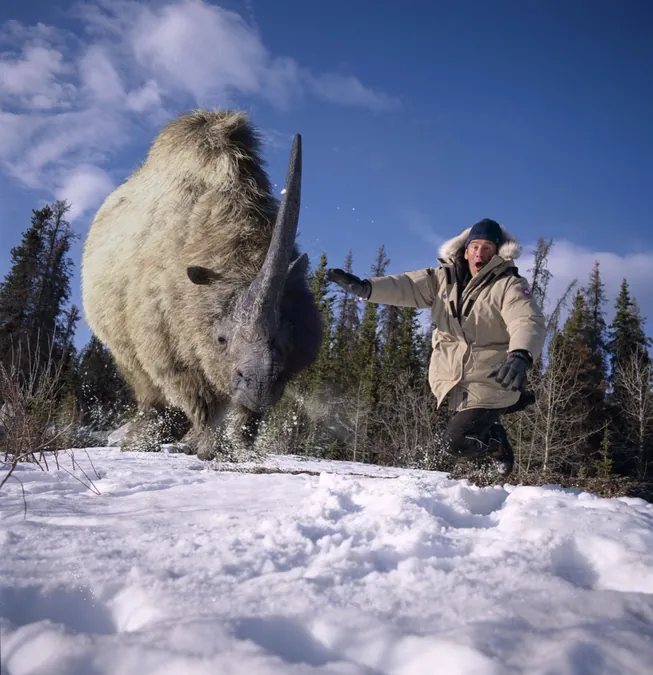
Incredible Discovery: 32,000-Year-Old Woolly Rhino Unearthed in Siberian Permafrost!
2024-10-02
Author: Wei
In a groundbreaking discovery that has captured global attention, researchers have unearthed the remarkably preserved remains of a woolly rhino in the depths of Siberia's permafrost. While the woolly mammoth often steals the spotlight in discussions of ancient megafauna, this latest find shines a light on the lesser-known yet equally fascinating woolly rhino, which roamed alongside its mammoth cousins during the Pleistocene epoch.
The remains were located in the Oymyakonsky District, a region in eastern Russia renowned for its extreme temperatures, which average between 46°F to 66°F in the summer—conditions ideal for preserving ancient organic matter. The woolly rhino, estimated to be around 32,000 years old, appears to have been encapsulated in the permafrost, making it one of the rarest examples of Ice Age fauna still containing soft tissues and a fully intact horn.
Professor Love Dalén, an expert in evolutionary genomics from Stockholm University, highlighted the significance of this discovery during an interview. “Typically, Ice Age remains consist of little more than bones and teeth, devoid of flesh or skin. To find a specimen this well-preserved is exceptional — there’s about a 1 in 10,000 chance,” he explained. This offers a unique opportunity for advanced genetic analysis that could shed light on the woolly rhino's biology, behavior, and perhaps even its extinction.
Research published in the journal *Doklady Earth Sciences* reveals intriguing details about the rhino. Analysis indicates it had a pronounced hump on its back and exhibited changes in its fur coloration, darkening and thickening as it aged. This not only marks a significant discovery in paleontology but also offers clues about the environmental adaptations of these magnificent creatures.
Interestingly, the woolly rhino was discovered by a team of gold miners who were sifting through the permafrost in search of valuable mammoth tusks. They are known to have an agreement with local authorities to report any significant findings to paleontologists, ensuring that such historical treasures don’t go unnoticed.
This find not only enriches our understanding of the diverse ecosystems that existed during the Ice Age but also ignites curiosity about how many more prehistoric secrets remain buried in the fossil-rich Siberian tundra. Who knows what other extraordinary discoveries await in this frozen museum of ancient life?



 Brasil (PT)
Brasil (PT)
 Canada (EN)
Canada (EN)
 Chile (ES)
Chile (ES)
 España (ES)
España (ES)
 France (FR)
France (FR)
 Hong Kong (EN)
Hong Kong (EN)
 Italia (IT)
Italia (IT)
 日本 (JA)
日本 (JA)
 Magyarország (HU)
Magyarország (HU)
 Norge (NO)
Norge (NO)
 Polska (PL)
Polska (PL)
 Schweiz (DE)
Schweiz (DE)
 Singapore (EN)
Singapore (EN)
 Sverige (SV)
Sverige (SV)
 Suomi (FI)
Suomi (FI)
 Türkiye (TR)
Türkiye (TR)